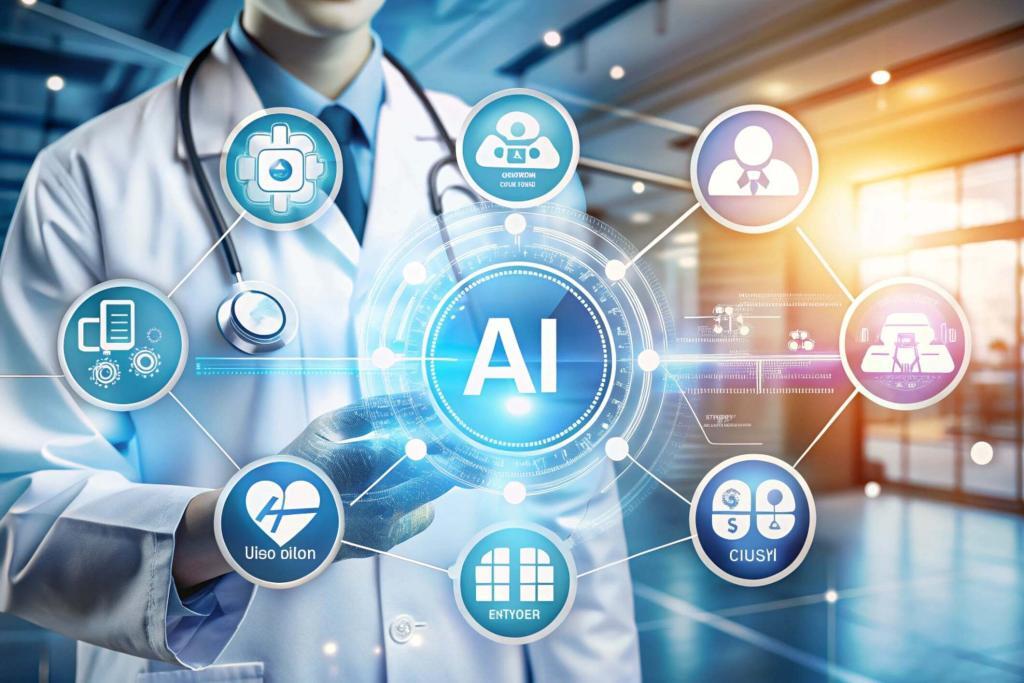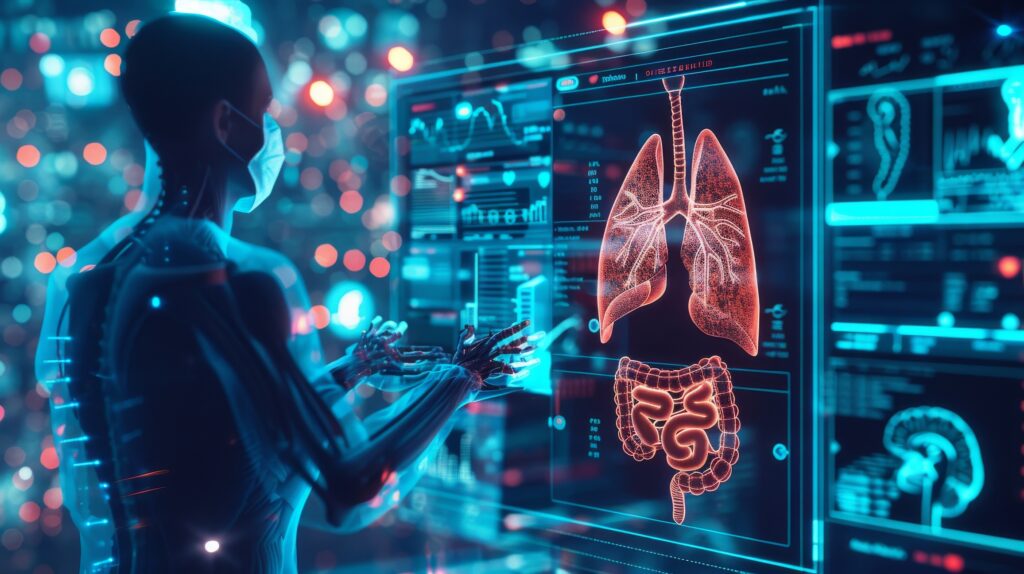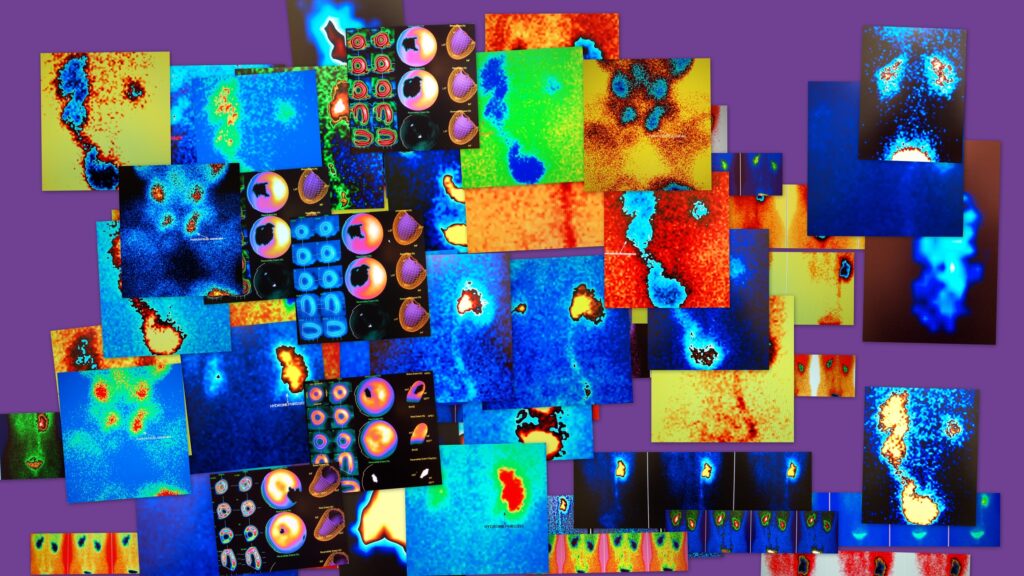Summary: Artificial intelligence in medical imaging has promised a revolution in diagnosis, workflow efficiency and personalised healthcare. Yet many now question whether the field has passed its defining threshold — a moment comparable to the Oppenheimer turning point in nuclear science — when innovation demands a corresponding level of ethical reflection and responsibility. This article explores whether that decisive moment has already occurred, or whether the potential of AI in medical imaging remains only partially realised, examining progress, barriers, and what is required for responsible transformation.
Keywords: AI medical imaging, tipping point, clinical translation, ethical responsibility, regulatory oversight, innovation gap
The meaning of an “Oppenheimer moment”
An “Oppenheimer moment” is a point at which a technology becomes so powerful or transformative that it forces humanity to confront its consequences. In the context of artificial intelligence, the term implies a juncture where innovation and responsibility must evolve together. In medical imaging, this metaphor asks a critical question: have we reached the point where AI’s influence is reshaping the field so completely that regulation, ethics, and governance can no longer remain in the background?
AI in medical imaging has progressed from theoretical research to practical tools that interpret scans, assist with diagnosis and optimise workflow. Yet unlike the clear, irreversible leap that nuclear physics experienced with the atomic bomb, AI in healthcare is developing in more gradual, fragmented stages. The transformation is visible, but it has not yet become universal or irreversible.
The current state of AI in medical imaging
AI has achieved substantial technical success in image classification, segmentation, pattern recognition and anomaly detection. In radiology, oncology, cardiology, and neurology, algorithms can highlight tumours, detect fractures, assess blood flow, and identify subtle abnormalities that might otherwise escape human attention.
However, these achievements have not been uniformly translated into clinical practice. Many hospitals still rely on traditional interpretation workflows, and while some have introduced AI-assisted tools, adoption remains limited. The gap between research and real-world application is wide. Technical validation often outpaces regulatory approval and ethical clarity. Furthermore, most AI models are trained on specific datasets, leading to limitations in generalisability when exposed to new populations or imaging systems.
Although AI has demonstrated its ability to enhance accuracy and efficiency, the healthcare ecosystem around it — regulation, reimbursement, clinician trust and data interoperability — remains incomplete. Without alignment across these elements, the transformation risks remaining partial.
Have we crossed the threshold?
To decide whether we have already experienced the Oppenheimer moment in medical imaging, one must look for signs of irreversible change. The key indicators would include AI systems being deeply embedded into clinical workflows, regulatory bodies adapting frameworks to continuous learning models, and clinicians fundamentally changing their approach to diagnosis and interpretation.
At present, these conditions are not fully realised. Most AI applications serve as decision-support tools rather than autonomous systems. Radiologists remain the primary decision-makers, using AI outputs to assist rather than replace their judgement. This suggests that AI is still in a supportive rather than a transformative phase.
The pace of change, however, is accelerating. Large-scale models capable of understanding both text and imaging data are beginning to influence radiology. As these systems mature, they may reach a level of reliability that shifts clinical reliance, when AI becomes so integrated that its removal would disrupt healthcare delivery, marking the true Oppenheimer moment.
The barriers delaying transformation
Several obstacles prevent the field from reaching this defining moment. The first is data fragmentation. Imaging datasets remain scattered across institutions, are often incompatible in format, and lack consistent annotation. This limits the development of models that can generalise across patient populations.
Secondly, there is regulatory inertia. Existing medical device frameworks were not designed for self-learning or continuously updated AI systems. Regulators are adapting, but the pace is slow compared to technological advancement. The absence of clear, dynamic approval processes leaves many promising tools in limbo.
Thirdly, clinical integration presents a significant hurdle. AI tools must fit seamlessly into radiologists’ workflows without creating additional administrative or cognitive burden. Many early implementations failed because they added steps rather than simplifying the process.
Lastly, trust remains fragile. Clinicians often express scepticism towards AI outputs that lack transparency or interpretability. Patients, too, may worry about data privacy, bias and accountability. Without clear communication and evidence of reliability, trust will continue to lag behind innovation.
The cost of missing the moment
Failing to recognise or seize the Oppenheimer moment carries risks. Suppose medical imaging AI remains stuck between the promise of research and cautious adoption. In that case, healthcare will miss out on potential benefits such as earlier diagnosis, improved efficiency and more equitable access to specialist expertise.
Delayed adoption can also lead to fragmented innovation. Smaller, unregulated systems may fill the gap, entering markets without proper oversight. This could result in uneven quality, data misuse or unintended harm. Furthermore, the longer the transition is postponed, the greater the chance that governance frameworks will be reactive rather than proactive — responding to problems only after they arise.
There is also a moral dimension. AI has the potential to reduce diagnostic error, standardise image interpretation and shorten waiting times. Every year of hesitation may equate to missed opportunities for better patient outcomes. Therefore, “missing the moment” is not merely a question of technological timing but one of human cost.
Signs that the moment is approaching
Although the Oppenheimer moment may not yet have fully arrived, evidence suggests that it is imminent. Hospitals are beginning to incorporate AI triage systems into radiology departments. Some tools now pre-screen chest X-rays for abnormalities, automatically prioritising urgent cases. Large imaging datasets are being shared across national health systems, improving algorithm robustness and fairness.
AI-assisted image interpretation is also extending beyond diagnosis into therapy planning, monitoring and outcome prediction. The development of multimodal AI models that combine imaging, genomics and clinical data points to a future of integrated, personalised medicine.
As technology converges with policy and infrastructure, the threshold may soon be crossed. The challenge lies in ensuring that it happens deliberately, with clear oversight and ethical guidance, rather than by default through uncontrolled proliferation.
Managing the moment responsibly
Reaching the Oppenheimer moment responsibly means preparing for a transformation that is as much ethical and organisational as it is technological. Several principles should guide this shift.
Firstly, transparency and explainability must be embedded into AI systems. Clinicians need to understand not just what the algorithm predicts, but why. Interpretability is crucial for accountability and trust.
Secondly, data governance must prioritise security, consent and equity. AI systems trained predominantly on datasets from specific demographics risk perpetuating bias. Ensuring representation across age, gender, ethnicity, and geography is essential for fairness.
Thirdly, human oversight must remain central. AI should augment rather than replace clinical expertise. The goal should be a partnership between machine intelligence and professional judgement.
Fourthly, education and training for radiologists and other healthcare professionals are vital. Understanding how to interpret AI outputs, evaluate algorithmic performance and identify errors will become core competencies in the future of imaging.
Finally, regulatory and reimbursement frameworks must evolve in tandem. If the financial and legal infrastructure lags behind the technology, innovation will either stall or drift into unregulated spaces. A balanced approach that rewards validated AI use while safeguarding patients will be key.
Looking ahead
The future of AI in medical imaging will depend on whether the community chooses to treat its current position as a crossroads or a comfort zone. The Oppenheimer metaphor reminds us that powerful technologies bring a dual burden: the ability to transform and the responsibility to control.
If the field moves forward without adequate foresight, it risks a disjointed, inequitable system where AI becomes another layer of complexity rather than clarity. But if it evolves with intention — building trust, transparency and accountability — AI can truly elevate diagnostic medicine.
The “moment” may not yet have arrived, but it is approaching rapidly. What will define this era is not merely technological prowess but collective readiness. Medical imaging stands at a threshold similar to that faced by physicists in the 1940s: a point where the question is not only what we can do, but what we should do.
Conclusion
AI in medical imaging has not yet reached its Oppenheimer moment, but the horizon is in sight. The technology is advancing faster than the frameworks designed to guide it, and the choices made now will determine whether its future impact is revolutionary or uneven. To ensure a beneficial outcome, the field must cultivate trust, transparency, and accountability alongside innovation.
The true Oppenheimer moment will arrive when AI becomes indispensable to diagnosis — when it no longer feels like an add-on, but an intrinsic part of how medicine sees, understands and heals. Whether that moment is one of triumph or regret depends on how prepared we are when it comes.
Disclaimer
This article by Open MedScience is intended for informational and educational purposes only. It does not constitute medical, legal, or professional advice. The views expressed are those of the author and do not necessarily reflect those of Open MedScience. No responsibility is accepted for any actions taken based on this content.




